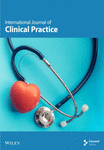Comparative Analysis of Risk Factors for Postpartum Hemorrhage in Forceps-Assisted and Vacuum-Assisted Vaginal Deliveries
Abstract
Objective: This study aims to compare the clinical outcomes of forceps-assisted vaginal delivery (FAVD) and vacuum-assisted vaginal delivery (VAVD) in primiparous women and to identify risk factors contributing to moderate and severe postpartum hemorrhage (PPH) associated with these delivery methods.
Methods: A retrospective analysis was conducted on clinical data from 1237 primiparous women who delivered at the Obstetrics Department of Hunan Maternal and Child Health Hospital between April 2018 and April 2022. Among these, 711 underwent FAVD and 526 underwent VAVD. Maternal and neonatal characteristics, including age, gestational age, prepregnancy body mass index (BMI), pregnancy weight gain, neonatal weight, and labor duration, were evaluated. The study assessed labor duration, neonatal weight, maternal complications, neonatal complications, and the incidence and severity of PPH. Binary logistic regression analysis was performed to identify risk factors for moderate (500–1000 mL blood loss) and severe (> 1000 mL blood loss) PPH associated with the two delivery methods.
Results: Compared with FAVD, VAVD was associated with a higher incidence of uterine atony (p < 0.05) and increased risks of both moderate and severe PPH (p < 0.05). Pregnant women with significant gestational weight gain more frequently underwent VAVD (p < 0.05), which also correlated with prolonged second and total labor stages compared with FAVD (p < 0.05). Logistic regression revealed that uterine atony was a significant risk factor for both moderate and severe PPH (p < 0.05). Prolonged total labor independently increased the risk of severe PPH in VAVD cases (p < 0.05 and OR 1.575), while gestational weight gain and prolonged labor were independent risk factors for moderate PPH in FAVD cases (p < 0.05, OR 1.047 and OR 1.287, respectively).
Conclusions: VAVD is associated with longer labor duration, a higher likelihood of PPH, and increased neonatal scalp hematoma incidence compared with FAVD. Prolonged total labor significantly contributes to moderate PPH risk in FAVD and severe PPH risk in VAVD. Uterine atony is an independent predictor of both moderate and severe PPH.
Conflicts of Interest
The authors declare no conflicts of interest.
Open Research
Data Availability Statement
All data are provided in this study, and raw data can be obtained from the corresponding author upon reasonable request.




